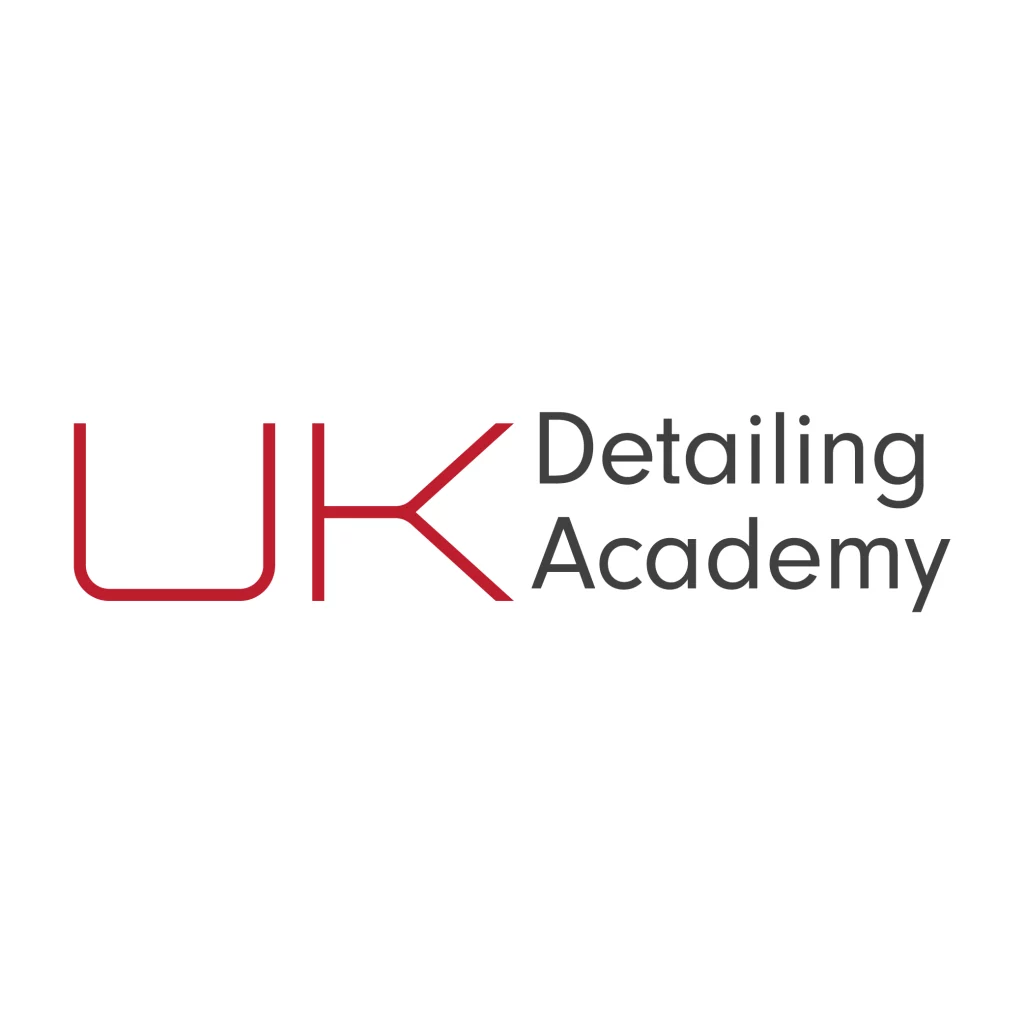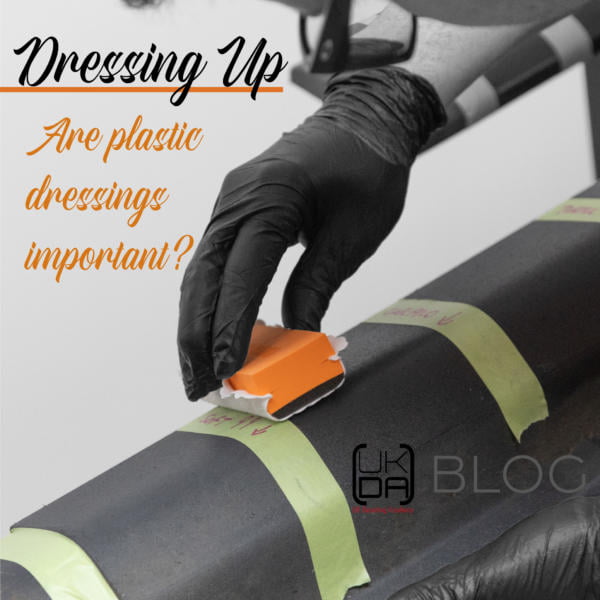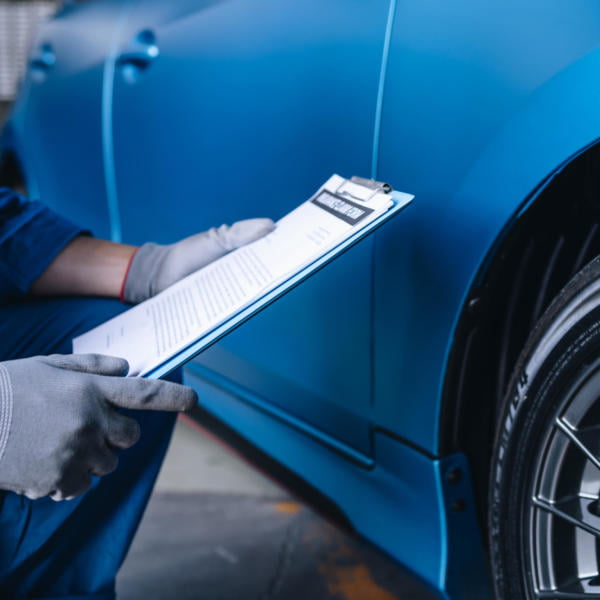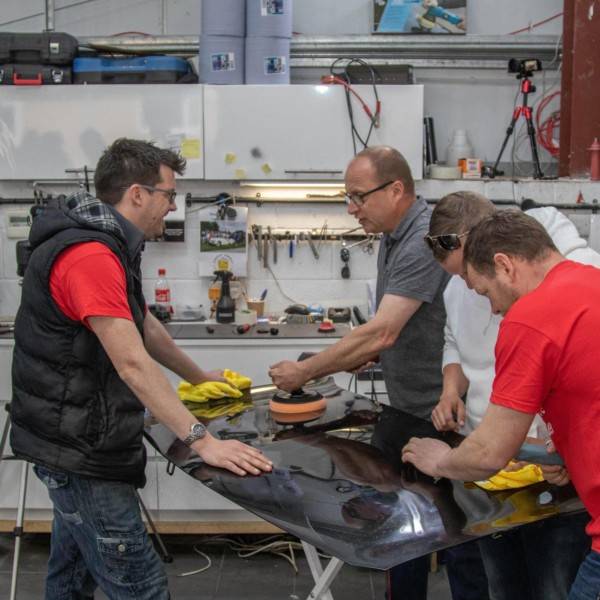“Question Everything”
– It’s one of our mantras here at UK Detailing Academy.
There are so many assumptions, spurious science, and “everyone knows” facts out there on the internet for new, innocent and enthusiastic entrants to the industry – who will sit for hours and research the best way to deliver services – that it’s easy to accept many supposed “facts” at face value, which make sense until you start to query them…
Anyone who attends our courses doesn’t just pay for our time whilst they’re here. We’re always on the end of an email, message thread, or phone line to answer questions that may come up and help prevent a problem from arising in the first place.
This is a reply we sent to a selection of follow-up questions we recently received from one student a week or two after attending our Level One course. We’re publishing them, with permission, as the questions are probably the same that many encounter, so we wanted the answers freely available:
” Hi XXX.
Please find your answers below in italics.
Belt shaft vs drive shaft motorbike – do they need special care after wash ? The drive shafts are covered and the belt system is nothing that you can clean as I can see. Is that correct?
Not entirely, seals on drive shafts can weep and keeping them clean will prolong their lifespan ultimately, so clean anything visible as required. This also goes for areas such as belt pulleys, rather than the belt itself, as these are components which will prematurely wear if grit etc. accumulates.
What’s your opinion about water softeners with resin and salt and spotless systems? Do we need them?
If you’re in a hard water area, yes they will make your job easier and prevent drips and sprays from leaving mineral deposits on vehicles. if you’re in a soft water area with 0 or near 0ppm mineral content – which you can test with a cheap TDS meter – then not so much. DI resin vessels are cheaper than RO systems and waste less water, but they cost more to maintain and can only filter so much at a time, so not really useful as a direct feed system. If you pre-filter though, and collect the water in an IBC this can be used efficiently for final rinsing.
When chemicals are mixed, how long are they stable?
That’s primarily going to come down to external factors such as temperature – extreme cold is the biggest enemy of water-based diluted mixes – hence the minimum storage temperatures printed on most bottles. In ambient temperatures, you may see colour change over time but it would be rare for the efficacy of chemicals outside of solvent-based suspension – such as ceramic coatings – would be affected by time, and again these will usually have expiry dates attached with them for such a purpose.
What is ASMR? (seen on social media)
autonomous sensory meridian response – basically videos with a calming or sensory influence. Nothing to do with practical cleaning, just a social media trend, a bit like popping bubble wrap.
Do cabrios need extra care?
Cabrio cleaning is something we cover in Level 2, general maintenance is dry hoovering to remove dust and dirt as part of a valet. More intense cleaning is a service in its own right which includes a deep cleaning process followed by a protection product.
With wheels, why are we using an alkaline degreaser and an iron remover instead of using a car shampoo and an iron remover ? I know the difference, one is a degreaser and the other is a shampoo. People tend to give iron remover as a wheel cleaner in shops and not a wheel degreaser as well. Probably if it makes bubbles it’s fine, but not to me. Am I right?
Actually, there’s no practical difference between an alkaline cleaner and a shampoo – both are degreasers, shampoos have lubrication so they can be physically wiped without marring and a few other qualities, but drilled down they are both degreasers with surfactants to loosen dirt and aid cleaning. In the context of wheels, if that’s what you are asking – The difference is you are touchlessly cleaning using a pre-wash degreaser to remove loose unbonded contamination and grease as part of your overall pre-wash, to then allow a dedicated wheel cleaner as your”shampoo” in this scenario to work more efficiently for touch washing. Iron removers can form part of these cleaners, or they can be a separate step afterwards to deal with iron contamination. An iron remover on its own is not a wheel cleaner, but wheel cleaners can contain iron removers as an “all in one” solution.
Moulds – how to remove them? Are they classed as biological?
Different moulds, different surfaces and different conditions will all require different answers for this.
Some can be vacuumed off. Some need physical abrasion. Some, such as black moulds, can physically stain a product to a point the marks can never be fully removed, though the mould is usually dead after cleaning. They are biological, and require moisture to grow, so mould is usually an indicator of long term damp which would need to be addressed to prevent regrowth. Killing them is easy, you can use anything from enzyme cleaners, to extreme ph, solvents and even natural biological agents such as tea tree oil solutions to kill the mould. Removing it once killed is going to come down to how well it’s adhered, because at this stage it’s just dirt/physical contamination.
After claying some residues stay bonded for me – can these cause any paint damage if we start polishing on the top? Can they become stuck on the pad?
Claying is a decontamination step to remove bonded residues before polishing. If there are still bonded contaminants the surface isn’t decontaminated sufficiently and you need to continue, either with clay or chemical decontamination, until it is before polishing or you will likely marr the surface further with a machine.
I’ve seen on a big YouTube channel that a clay towel with the right lubrication wouldn’t scratch your paint! Is that correct?
Only if there’s nothing on the surface to remove… Generally, clay media alone will not marr substantially, if at all, if heavily lubricated and used gently on a surface, but the contaminants you’re pulling off will! So not really correct at all as it would be pointless to clay in such a situation.
They’re also saying “if you feel clay working it’s wrong”. Should I use a clay towel after washing to make it extremely clean?
You should be able to feel the contaminants reduce as you use the clay media, so you will feel it grabbing and hear it abrading until everything is smooth, at which point you stop. As in the handbook, you should only be using clay media if you are going to polish, so not after just a wash service.
Steam cleaning isn’t suitable for biological hazards. Can we not using at the very end and clean the area around?
You can use steam whenever you want, where appropriate, just not as a biological cleaner – because it won’t achieve it on its own. You need the heat of a steamer to maintain a constant surface temperature of over 60c+ for 15 seconds to reliably kill bacteria and viruses. A typical steamer won’t do that except as a spot clean on a very specific area, as the temperature drops dramatically as little as 1 inch from the tip. Use it closer and you need to be sure the surface can handle the temperature. What you are also doing is introducing water into surfaces, which bacteria actually love; so cleaning vents, wafting steam over surfaces, not bringing areas up to temperature, will actually encourage further growth in the long term. Steam is a great degreasing tool, and good for breaking down glues, and sugar residues – but little else.
If you do not have acid wheel cleaner can you use an alkaline and iron spray instead?
This depends on what you are trying to remove. Broadly, yes, but for heavy deposits an acid cleaner will far our perform an alkaline cleaner, just as an alkaline cleaner will generally outperform an acid cleaner in removing organic greases. The best solution is to have a range available to cover all bases of contaminants efficiently. Whichever you use, it’s a two-step process and third-party iron cleaners should be applied after the wheel cleaner is rinsed off – unless using a pre-made all-in-one. There are a lot of further factors in this question, but this is a basic overview.
How could I learn more in detailing terminology looking, also how to build knowledge to become accredited in the IDA. Obviously buying products and trying them etc but is it only time I need?
You can browse sites such as Detailing Wiki for terminology definitions, or books such as Hand Wash Only have broader sections on general glossary and terminology.
What are my shampoo options in pH etc if a customer’s car is protected by wax, ceramic coating or graphene?
If you want to be confident a shampoo isn’t going to affect a surface coating, pH neutral is the safe option, but you’ll get better cleaning tailoring the chemical used to the contaminant – i.e. a car covered in greasy road film will clean better with a higher alkaline cleaner.
Do the pH of shampoos affect (eliminate/improve) the durability and duration of the sealants above?
In terms of waxes, they can strip with the higher extremes. In terms of ceramic-coated cars, alkaline shampoos can “clog” a finish, along with mineral deposits, so a semi-regular clean with an acidic shampoo can be beneficial to revive coatings, but ceramics offer much more resistance to harsh chemicals by their nature.
Can water spots damage the paint and become bonded to the clear coat?
Yes, they can etch the clearcoat requiring polishing or sanding to remove in extreme circumstances.
Wash mitts – same care afterwards as microfibre towels?
Yes, same material, same care routine, different wash load though to avoid contaminating cloths.
Can you brush in charging ports in electric cars?
Generally, yes. However heavy pressure washing to rinse should be avoided as this may penetrate water seals. Ensure to blow dry to remove moisture as this can potentially cause corrosion on points.
Does higher pH on a shampoo make the cleaning easier?
As with the other answers, it’s contamination-dependent. Acids will remove inorganics better, alkaline chemicals will address organics better, the surfactants used are a big contributor also. Chemical pH is only an indicator of strength as there are other factors which build the full picture of effectiveness; concentration, heat and time dwelling, but you use what the situation demands and what the surfaces tolerate and balance the risk appropriate to the situation.
What is the impact ratio on shampoos/snow foams?
A Panel Impact Ratio, or PIR is a metric being used more and more on concentrated snow foams to give a more accurate dilution ratio based on individual equipment and circumstances. PIR is a bit of a longwinded method to calibrate your dilution routines to your equipment the first time, but once you have the measurement it’s easy.
- Fill your lance up with water – for a visual cue it can help to add a few drops of food dye also. [This is all based on your mixer bottle being 1 litre
- With the bottle’s mixer dial turned up to maximum (+), turn on your pressure washer, hook up to your water supply, then spray through the lance into a bucket until the bottle is empty. Now measure how much water is in the bucket and translate it to millilitres.
This is your Total Volume Output (TVO) – or the total amount of liquid discharged to empty your snowfoam bottle. - Divide this number by 100, then multiply it by the PIR figure (such as 5%) to give you the volume of product you need to use in your lance. For instance;
- a PIR of 5% through one lance and pressure washer setup at 4800ml TVO would be 4800/100 x 5 = 240ml of product plus 760ml of water in the bottle (1 litre total).
What is GPM?
Gallons Per Minute – I would assume. Commonly used over litres per minute in America.
Glass hydrophobicity options/ways to improve? I’ve seen wax application…?
Specific glass sealants should be used – don’t apply wax to a windscreen as you can get smearing as it breaks down. Spray options such as Infinity Wax Diamond Vision are good for short-term top-ups, Soft 99 Glaco for medium-term, and long-term protection through Angelwax H2Go all proved well in the Pro Detailer Magazine megatest a couple of issues back.
When applying wax with a microfibre towel, how do you ensure it doesn’t become cloggy afterwards?
Whilst you can apply wax with a towel, a dedicated applicator – either microfibre or sponge, will be better, using towels only for buffing and removal. Soaking them in warm water (around 40c) and a detergent immediately after use prior to washing will give you an optimum chance at getting them thoroughly clean. Then a microfibre wash product in the washing machine – again at a warm water temperature should get them clean and reusable, but always check the cloths and applicators once dry to ensure they don’t marr surfaces.
How to clean your pads after polishing?
As on the course – clean as you go using compressed air if possible, or a bucket pad cleaner such as Lake Contry’s to keep pads clean in use. Afterwards, spray with a pad cleaner or APC to break down the residues and wash at 40 degrees for best results before air drying – not tumbling.
Once you apply any kind of protection to a surface can someone else tell what is applied?
No.
Old faded paint, how to improve it? Is it the first step a paint sealant (ceramic, wax etc) next-level machine polishing?
The first step and least destructive for preservation would be a glaze product such as Black Hole, my preference was always Meguiars #7, but they stopped making/importing it. Even just a wax will improve faded paint, and if that’s sufficient then you’re not removing surface material and continuing that preservation theme instead of correcting away layers of limited surface. Oxidation will be the biggest duller of single-stage paints, but this removes quite easily and you shouldn’t need anything too abrasive to achieve vast improvement.
Is pressure washing the most effective way to start detailing cars? Are there any other alternatives?
It’s the most effective way to remove loose contaminants before touching the car. A hose alone will achieve some, but you’ll be working far less efficiently.
How can I remove mould stains from convertible cars?
Deep cleaning and extraction, possibly followed with a surface treatment to kill algae – The full process needs to be physically demonstrated and is covered in Level 2.
Now, these are exactly the sort of questions we love fielding as it shows the “question everything” mantra has sunk in.
The three days spent with us in this case is a whirlwind of information and we don’t expect you to retain 100% of everything said – that’s why we supply a coursebook to serve as a memory jog if you’re just not sure.
There’s a lot of great information out there, and even more not-so-great. We’re here to help though – sometimes the answer is to come on another course to truly learn the why and how of processes, but if it’s correction, clarification or simply looking for some guidance as to what is the correct method, we’ll always get back to you with an answer.

![]()




